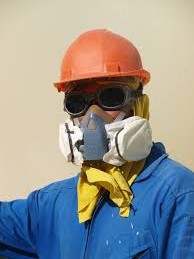 Mining company Linc Energy is now on the hot seat for allegedly exposing its workers to hazardous gases at a Queensland experimental plant.
Mining company Linc Energy is now on the hot seat for allegedly exposing its workers to hazardous gases at a Queensland experimental plant.
Based on a report made by an internal government briefing document as seen by the authoritative body ABC, an investigation has strongly backed serious claims by the mining company workers how they have suffered from poor health conditions and serious illness due to a series of uncontrolled gas releases at the plant between the years 2007 and 2013.
As commissioned by the department, a medical professional reviewed the statements of the workers as well as their medical records and histories. It was discovered that the “symptoms presented are consistent with exposure to the known chemical constituents of syngas.”
Synthesis gas, or more popularly known as syngas, is the end result of a production in the plant near Chinchilla located west of Brisbane. This is produced by burning subterranean coal seams through a notoriously hazardous process technically named as UCG or Underground Coal Gasification.
Synthesis gas is comprised of carbon monoxide, toluene, benzene, and other substances that are not only considerably carcinogenic but highly toxic.
The Queensland experimental plant in Chinchilla located west of Brisbane used to be a demonstration facility that operated from 2007, while Linc Energy started decommissioning a few years back, particularly in 2013.
The ABC board can show how the environment department’s investigation discovered the largely irreversible damage to the environment at the said site.
Also, the mining company Linc Energy is facing criminal charges over various allegations of seriously harming the environment of the Chinchilla community. The department of environment filed four of these charges against the company in April 2014. At the time, the company defined those charges as “misguided.”
It should be noted that the briefing document showed that apparently the departmental investigators raided the company’s head office in Brisbane as well as its work headquarters in Chinchilla as per search warrants that have been issued by the court in October 2013, authorising the raiding team to seize pertinent documents and electronic files.
The internal document explained that the raids were a result of the environment department receiving some reliable information from a number of confidential informants that pertained to critical incidents at the Chinchilla headquarters back in 2007.
Additionally, the briefing document reported that nearly a hundred of the former Linc workers and consultants employed by the mining company Linc Energy was subsequently interviewed.
Considered as the largest and the most protracted investigation so far in the history, the department has substantiated the claims of the informants, according to the briefing document.
Most significantly, the report confirmed that “all of the evidence obtained through warrants and witness statements has confirmed the information from the original informants.”
Finally, the briefing report describes the unending extensive monitoring of the plant by the environment department, with the last few weeks having officials unexpectedly finding high levels of toxic gas and hydrocarbon in the plant soil on the site’s adjacent properties.


